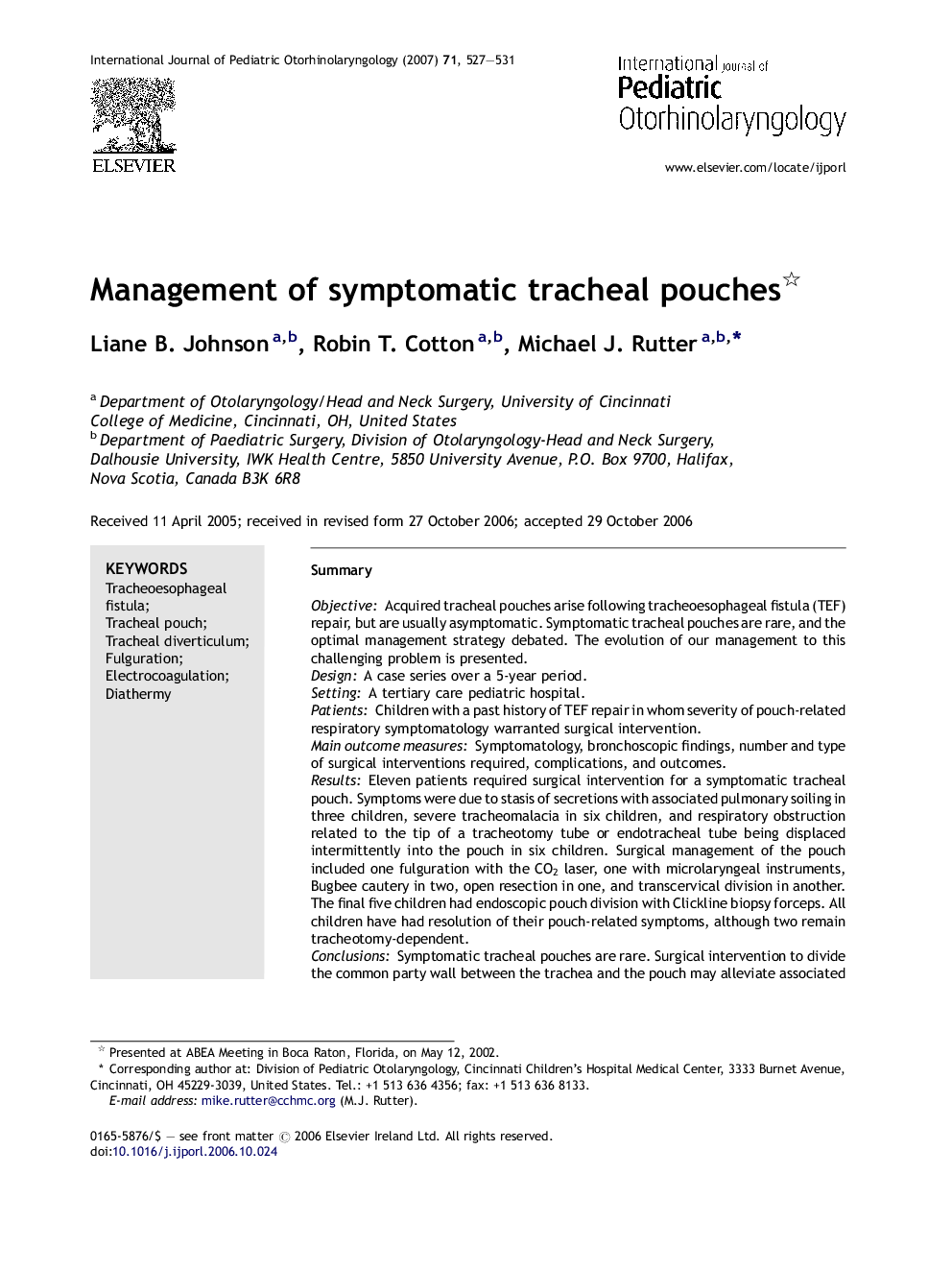| Article ID | Journal | Published Year | Pages | File Type |
|---|---|---|---|---|
| 4114859 | International Journal of Pediatric Otorhinolaryngology | 2007 | 5 Pages |
SummaryObjectiveAcquired tracheal pouches arise following tracheoesophageal fistula (TEF) repair, but are usually asymptomatic. Symptomatic tracheal pouches are rare, and the optimal management strategy debated. The evolution of our management to this challenging problem is presented.DesignA case series over a 5-year period.SettingA tertiary care pediatric hospital.PatientsChildren with a past history of TEF repair in whom severity of pouch-related respiratory symptomatology warranted surgical intervention.Main outcome measuresSymptomatology, bronchoscopic findings, number and type of surgical interventions required, complications, and outcomes.ResultsEleven patients required surgical intervention for a symptomatic tracheal pouch. Symptoms were due to stasis of secretions with associated pulmonary soiling in three children, severe tracheomalacia in six children, and respiratory obstruction related to the tip of a tracheotomy tube or endotracheal tube being displaced intermittently into the pouch in six children. Surgical management of the pouch included one fulguration with the CO2 laser, one with microlaryngeal instruments, Bugbee cautery in two, open resection in one, and transcervical division in another. The final five children had endoscopic pouch division with Clickline biopsy forceps. All children have had resolution of their pouch-related symptoms, although two remain tracheotomy-dependent.ConclusionsSymptomatic tracheal pouches are rare. Surgical intervention to divide the common party wall between the trachea and the pouch may alleviate associated respiratory symptomatology. The Clickline biopsy forceps is a safe, rapid, and effective method of dividing a tracheal pouch.
